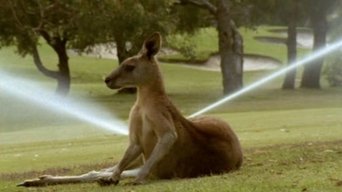
The final instalment explores man's impact on Australia's wildlife. The arrival of Europeans brought huge changes. Some creatures have benefited - golf courses provide perfect browse for kangaroos and a landfill site is an important feeding ground for ibises – but many have suffered. Early homesick colonisers tried to model the landscape on the English countryside, bringing with them animals which have since wreaked havoc. Millions of wild pigs now roam, destroying vegetation, damaging waterholes and eating birds' eggs. Rabbits, camels and cane toads were also introduced and are out of control. European honeybees are supplanting native bees in the competition for nectar, and foxes prey on small marsupials. 54 native frogs, birds and mammals, including the Tasmanian tiger, have become extinct. Some which were presumed extinct have since been rediscovered, including Australia's rarest mammal, Gilbert's potoroo. Scientists are still searching for the night parrot after a single dead specimen was reported in 1990, but the great desert skink, familiar to Aborigines, is more widespread than previously thought. On Barrow Island, rare fauna including golden bandicoots and burrowing bettongs live amongst the oil wells, and a perentie drinks from a dripping air-conditioning unit. On Tasmania, devils and tiger quolls are filmed scavenging food in a sheep farmer's shed. Modern cities can also be a refuge for wildlife. 30,000 grey-headed flying foxes roost in Melbourne’s botanical gardens and feed on orchard fruit nearby, while paying tourists feed wild rainbow lorikeets in a Brisbane park.